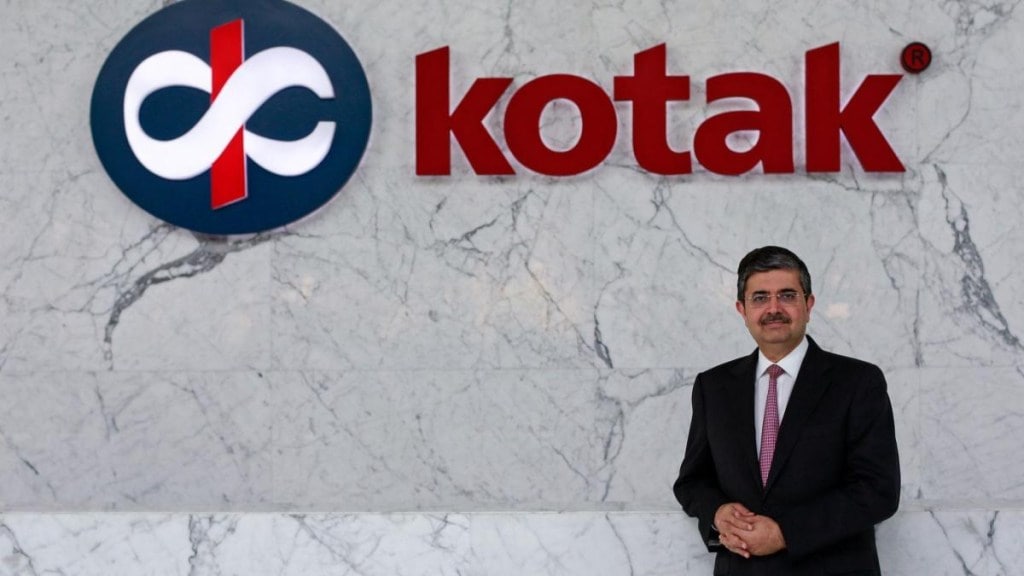In an interview to CNBC TV18 shortly after his sudden decision on Saturday to step down as managing director & CEO of Kotak Mahindra Bank (KMB), Uday Kotak said, “what you create must outlive you.” He has already ensured it in more ways than one. In less than four decades, the institution, which started as a small bill-discounting outfit n a 300 sq ft office space at Mumbai’s Navsari Building, has transformed into India’s third largest private sector bank. And it will fittingly continue to be known by his famous surname.
Kotak, 64, who started his business journey with Rs 30 lakh as capital, has now become the richest banker in Asia by virtue of owning 26% stake in the bank, which was valued at over Rs 3.5 trillion as of Friday’s close. That’s a phenomenal distance covered – all within one generation.
But the man had originally wanted to cover only the 22 yards of a cricket pitch. A right-hand batsman and left-arm spinner, he played the Kanga League in Mumbai and was dreaming of bigger things in the game. But in September 1979, an accident led to brain haemorrhage and signalled the end of what he had thought was a promising cricketing career.
Cricket’s loss has been the financial sector’s gain. By Kotak’s own admission, what helped the transition was that he was a maths wizard who could see the larger picture beyond the numbers and topped his university in BCom. An MBA from Jamnalal Bajaj Institute followed, and Kotak gave up his plan to join Hindustan Unilever (then known as Hindustan Lever) at his father’s insistence that he should join the flourishing family business of trading cotton and other agricultural commodities.
That of course didn’t happen as he opted out of a business where every decision had to be agreed to by at least 14 family members (60 family members lived on one floor, sharing a single kitchen) but Kotak carved out his own niche in the financial sector with his father’s blessings.
His big break came in 1995 when he struck a joint venture with Goldman Sachs. The same year, he formed a car-financing JV with another global giant, Ford Motor. Later, he formed an insurance JV with Old Mutual. These global partnerships helped Kotak learn the tricks of the trade from the most evolved financial companies. He eventually bought out all his foreign partners. In 2015, Kotak managed the largest merger in India’s banking industry at the time, by buying ING Vysya Bank.
Kotak has said in the past that his idols are John Pierpont Morgan, Sr, Marcus Goldman, Charles E Merrill and his friend, Edmund C Lynch—all of whom have built global financial houses in the US. JPMorgan Chase, Goldman Sachs and Merrill Lynch were all set up by families and, over a period of time, the promoters diluted their stakes in a non-disruptive manner as business scaled up.
Kotak, however, could not follow his idols on the “non-disruptive” part of scaling down his stake in the bank. In fact, KMB had threatened to take the Reserve Bank of India to court — an unprecedented move by any bank — over the issue of promoter stake following a regulatory diktat to bring it down to 15%. The matter was resolved after the RBI allowed him to hold a 26% stake.
However, he couldn’t do anything with the RBI’s decision to cap the maximum tenure of a bank CEO at 15 years, something which finally led to his stepping down from the post.
The move obviously has left a bitter taste, evident from Kotak’s latest letter to shareholders in which he expressed concerns about the impact of over-regulation on the entrepreneurial spirit of financial sector entities. Of much more significance was his reference to “Arjuna’s eye” — a favourite phrase of the current RBI governor. Kotak said the “eye” should be restricted to risk management and not on bureaucratisation of financial services.
While KMB insiders say Kotak’s comments were generic, the fact is that a man who has been extra careful in choosing his words wouldn’t have not known the impact of his letter to shareholders.
Kotak used to work 60 hours a week as the head of KMB. While he would now have some time for playing the sitar — a passion he was unable to pursue — much of his time now would undoubtedly be still reserved for keeping an Arjuna’s eye on the future course of KMB in his capacity as “non-executive director with a significant stake” in the bank. While RBI rules do not forbid a promoter-CEO from being appointed as a director once his term ends, it is unclear whether such an appointment goes against the spirit of the regulation. The last word may not have been said on the issue.

